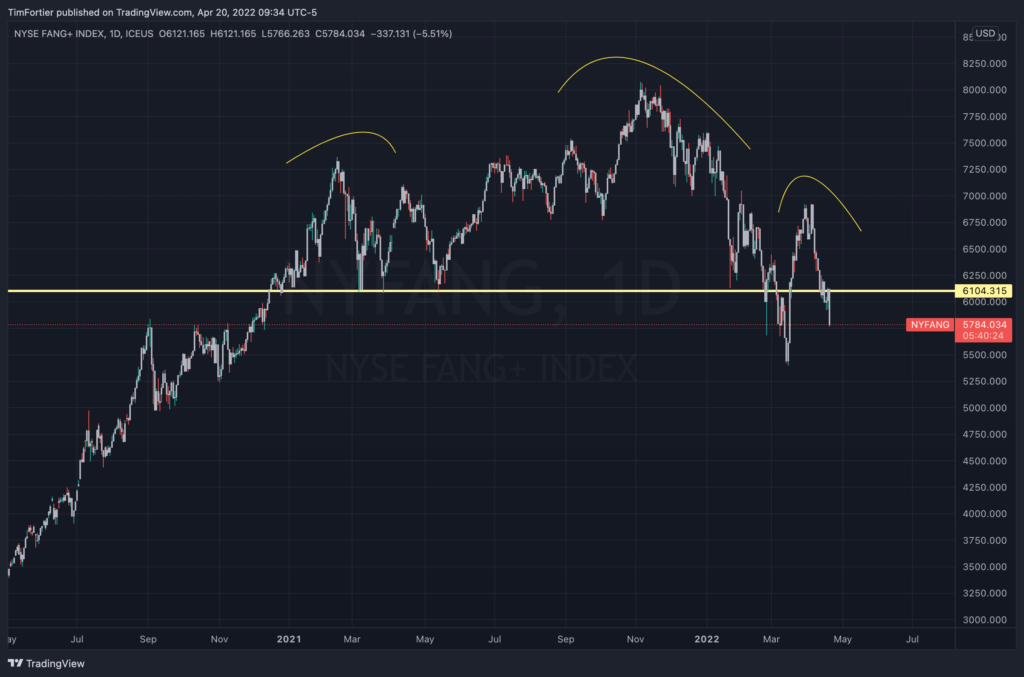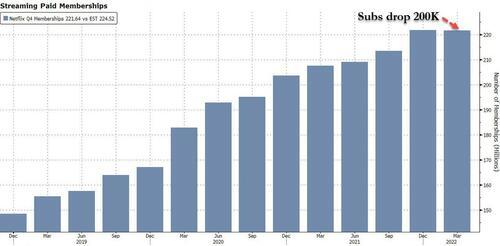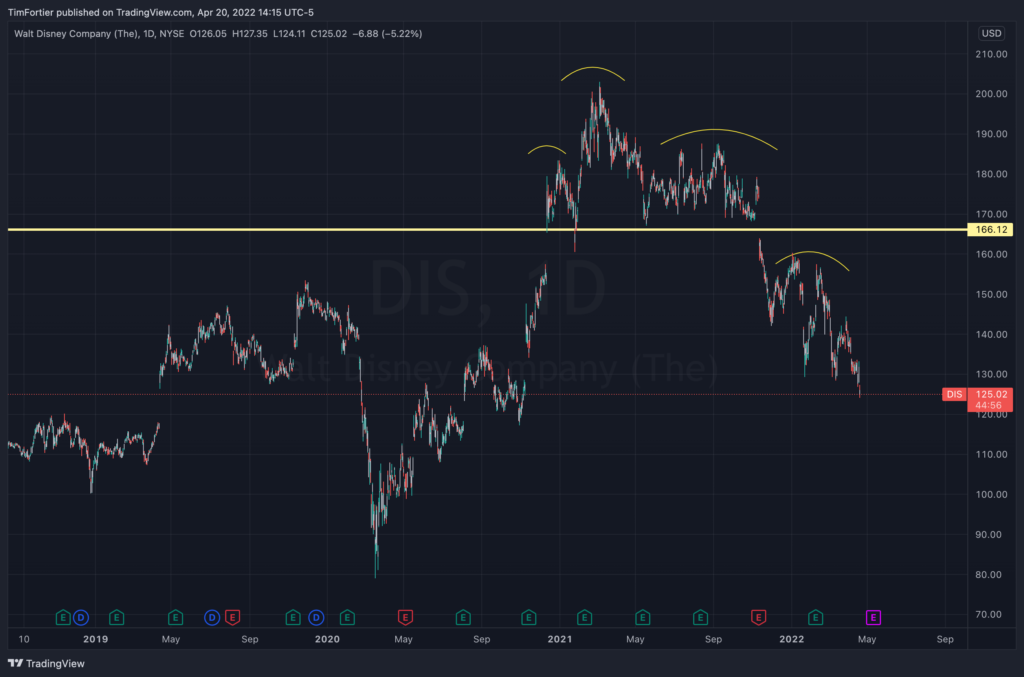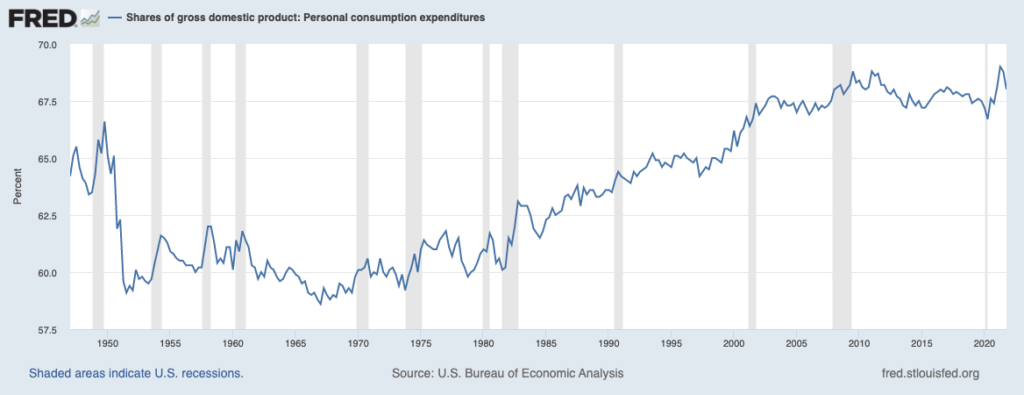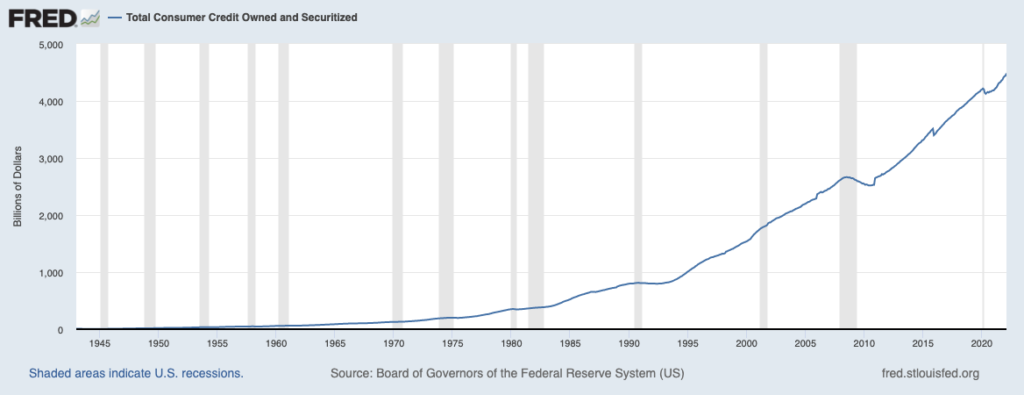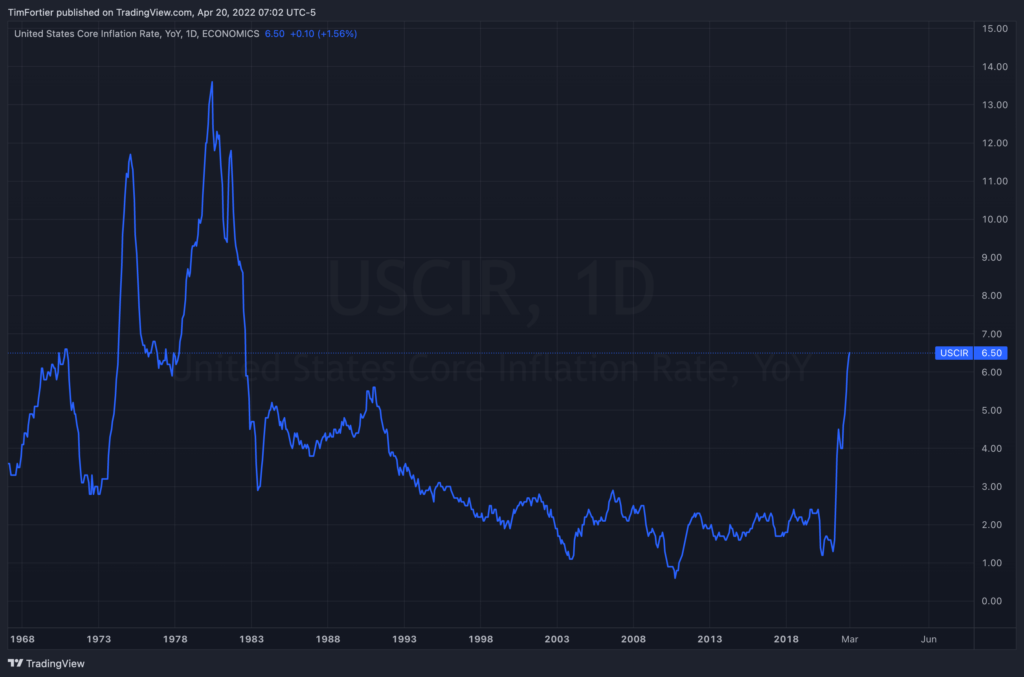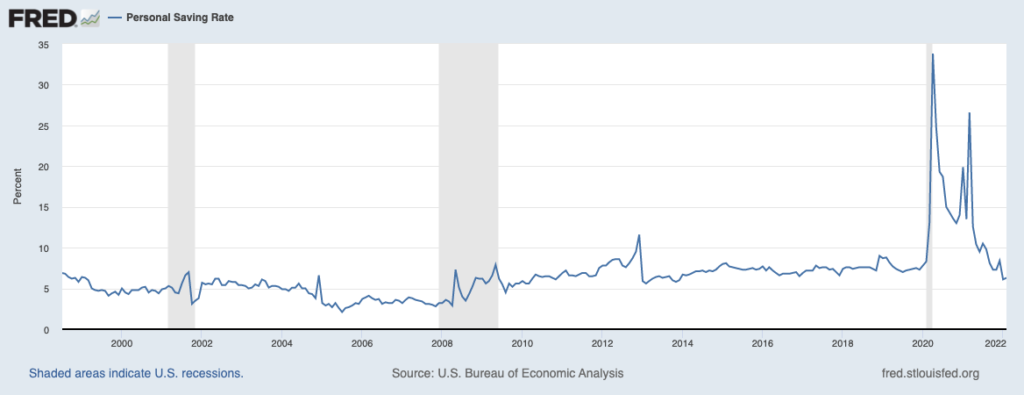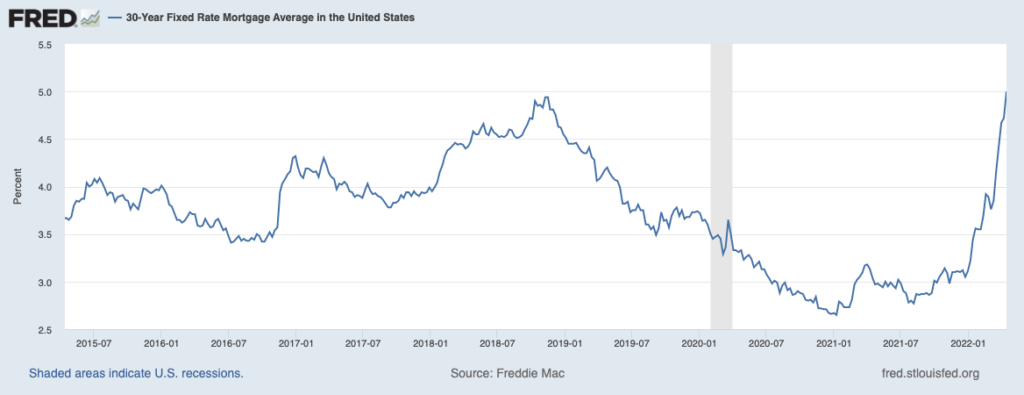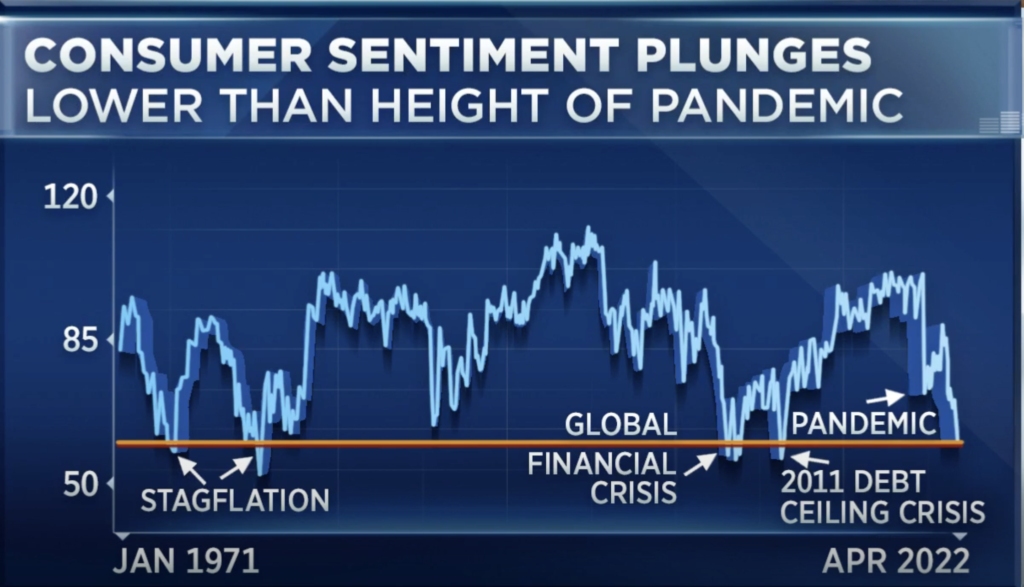Related Blogs
April 21, 2022 | Avalon Team
On Tuesday, Netflix reported earnings that disappointed the Street. As a result, the stock imploded, dropping by over 25%.
Netflix shares have been part of the “club” – the mega-cap market leaders known as the FAANGMs (Facebook, Amazon, Apple, Netflix Google, and Microsoft).
First, Facebook disappointed. Now it’s Netflix. The Generals are getting shot one by one.
And it’s showing up in the rest of the market.
The NYSE FANG+ Index is rolling over with a giant head-and-shoulders top forming. The action following the decline of Netflix has the price of this index accelerating through the neckline (yellow horizontal line).
This bodes poorly for the market in general as these mega large-caps have kept the stock market indices levitating.
One by one these fallen leaders join the majority of stocks in downtrends.
Netflix earnings of $3.53 actually beat the estimates of $2.91. But that isn’t what upset the apple cart.
Rather, it was the loss of 200,000 paid subscribers in the current quarter – something that hasn’t happened since 2011.
Plus, Netflix warned of deepening trouble ahead as the company is forecasting a global paid-subscriber loss of 2 million for Q2.
Part of the blame is being put on “shared households” – and certainly, competition has steadily increased. It’s practically impossible to keep up with numerous steaming channels that include Disney+, Amazon Prime, Apple TV, Hulu, Peacock, Starz, HBO, and YouTubeTV, to name a few.
But I also think this is speaking to a larger problem that is going to continue to impact the economy, and thus, the market.
We are in an environment where the average consumer is being squeezed and discretionary spending is being curtailed.
People are beginning to cut back on non-essentials as food and energy take up a greater portion of consumer discretionary income.
Before I dig deeper into the economics of all of this, here is a chart of the “Lion King of Discretionary Spending” – Disney.
See the similarity? Shares of Disney have put in a clear top and are heading lower too.
Let’s dig into what the likely cause for all of this is.
Let’s begin with a view from 30,000 feet.
The consumer, through all of their spending, represents about 68% of the overall economy. So the health of the consumer and the “average family” has a lot to do with the general health of the economy overall, and thereby, the stock market.
Now, much of this spending comes on the back of borrowing – everything from mortgages to credit cards and personal loans. The next graph shows the steady rise in consumer borrowing.
The ability to borrow is based on the amount of disposable income available, the attractiveness of interest rates, debt-to-household-income percentage, as well as feelings of optimism or pessimism.
My concern is that we may be reaching the “debt saturation” point where the consumer can no longer afford and/or desire to borrow additional money.
Let’s begin with the fact that consumer prices are currently rising at the fastest pace in 40 years.
This erodes the value of a dollar as everything costs more. And wages are not keeping up with this.
“Real” hourly earnings (wage growth minus inflation) are actually falling, which translates into less discretionary disposable income.
This makes it harder for people to save money. In fact, the personal savings rate is back to below pre-Covid levels.
This means more families are living paycheck to paycheck.
When wages rise at a slower pace than inflation, paychecks won’t go as far at the grocery store and at the gas pump.
Concurrently, borrowing costs are also rising. Mortgage rates have doubled since 2021. Coupled with all-time high construction costs, homes are literally unaffordable.
This is all leading to increasing negative sentiment and a contraction on the part of the consumer – again, the largest part of the U.S. economy.
While household sharing and increased competition for Netflix are partly to blame for Netflix’s current woes, I am increasingly becoming concerned over the durability of consumers to withstand the current economic forces that may be putting many households in jeopardy.
Stay tuned for more as we keep monitoring and analyzing the market to help you make smarter, safer choices for your portfolio.
If you have any questions or have been considering hiring an advisor, then schedule a free consultation with one of our advisors today. There’s no risk or obligation—let's just talk.
Tags

Free Guide: How to Find the Best Advisor for You
Get our absolutely free guide that covers different types of advisory services you'll encounter, differences between RIAs and broker-dealers, questions you’ll want to ask when interviewing advisors, and data any good financial advisor should know about you and your portfolio.


